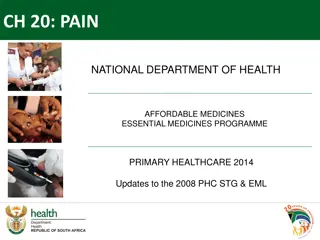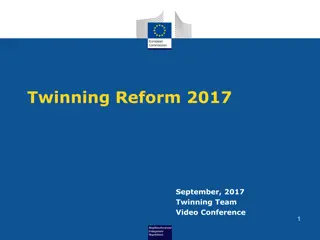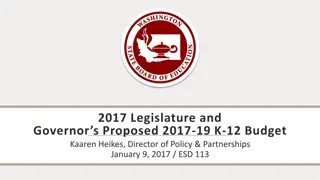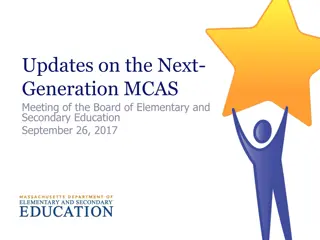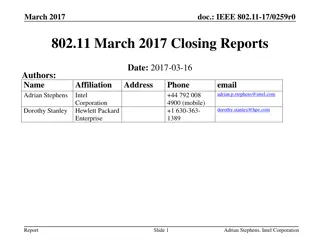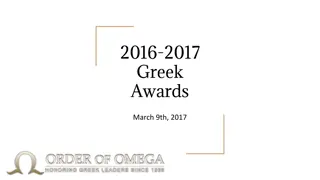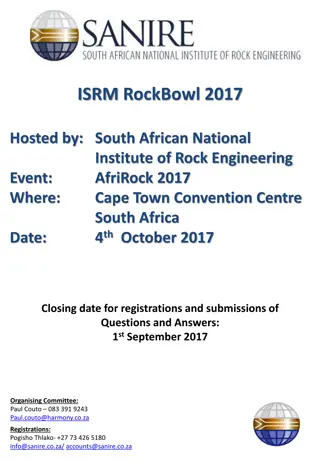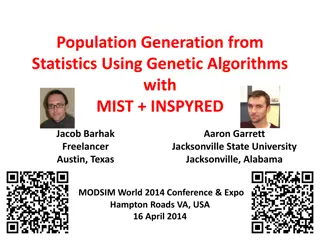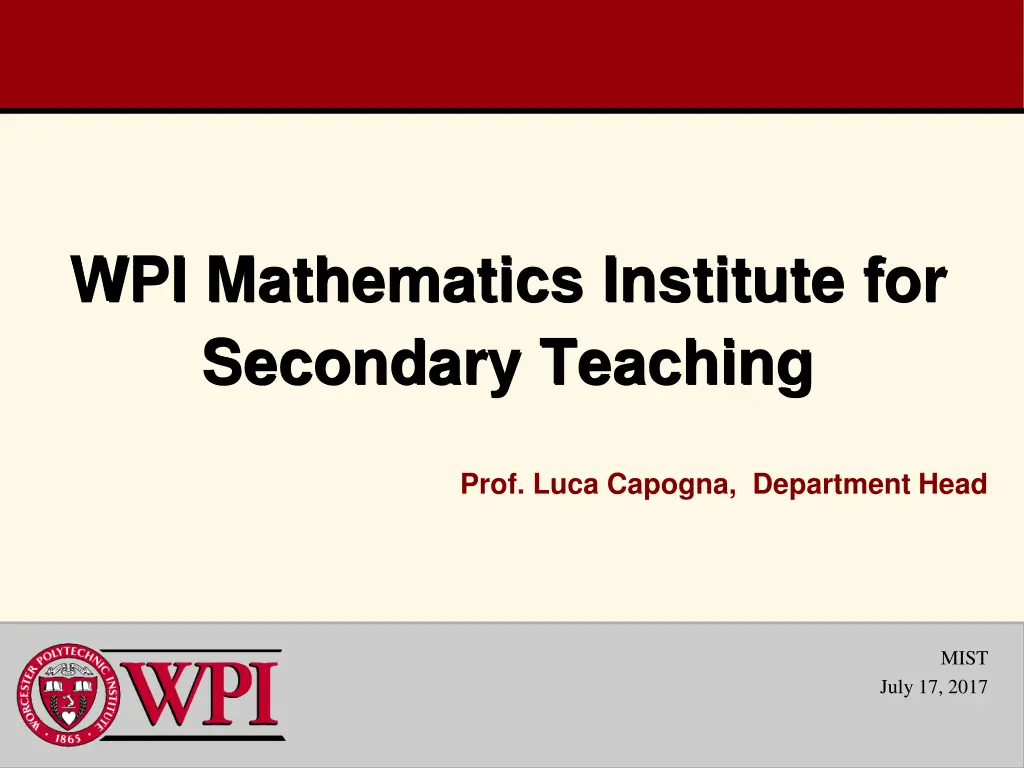
Exploring the Impact of Mathematics in Education and Careers
Join the WPI Mathematics Institute for Secondary Teaching (MIST) to delve into how high school mathematics plays a crucial role in today's job market and provides a foundation for college-level math. Discover the goals of MIST, which include collaborative workshops, engaging with industry professionals, and translating ideas into educational materials for students.
Download Presentation

Please find below an Image/Link to download the presentation.
The content on the website is provided AS IS for your information and personal use only. It may not be sold, licensed, or shared on other websites without obtaining consent from the author. If you encounter any issues during the download, it is possible that the publisher has removed the file from their server.
You are allowed to download the files provided on this website for personal or commercial use, subject to the condition that they are used lawfully. All files are the property of their respective owners.
The content on the website is provided AS IS for your information and personal use only. It may not be sold, licensed, or shared on other websites without obtaining consent from the author.
E N D
Presentation Transcript
WPI Mathematics Institute for Secondary Teaching Prof. Luca Capogna, Department Head MIST July 17, 2017
The Goals of MIST MIST is a collaborative workshop where high school math teachers, college math faculty and professional mathematicians working in industry engage in a series of conversations and projects to gain a better understanding about how high school mathematics has a pivot role in the job market today, and how it provides the foundation for college level mathematics.
The Goals of MIST The schedule includes presentations about applications of mathematics and statistics from a variety of perspectives: Health Services, Computer Games, Data Sciences, Financial industry, Actuarial careers, Manufacturing Technology, Robotics and more. Some of the speakers will specifically address ideas for how these perspectives may be shared with high school students.
The Goals of MIST As integral part of the workshop all the participants will be asked to work in teams on specific projects dealing with the translations of ideas from the presentations to actual educational material for high school students. The last afternoon will be reserved to group presentations for these projects. We will ask your permission to share these projects with the broader community, envisioning a growing data base of educational material that can impact many schools.
The Goals of MIST This is the third edition of MIST. We had one in 2015 and one in 2017, which were funded by WPI Mathematical Sciences, and by a Toyota-RIT program. This year s MIST is entirely funded by the WPI Mathematical Sciences department It is a pleasure to acknowledge the work of our assistant operations manager Ms. Rhonda Podell, our IT manager Mike Malone and of the rest of the organizing team of WPI faculty John Goulet, Stephan Sturm, Suzanne Weekes.
What do we talk about when we talk about Mathematics. What do mathematicians do? Where do they work? Is their work impactful? Does it matter? Is it a competitive, desirable career?
What do Mathematicians Do? The universe cannot be read until we have learned the language and become familiar with the characters in which it is written. It is written in mathematical language, and the letters are triangles, circles and other geometrical figures, without which means it is humanly impossible to comprehend a single word. Without these, one is wandering about in a dark labyrinth Galileo Galilei (1564-1642) Through their work, Mathematicians build a language that allows us to experience in a quantitative and self consistent fashion the complexity of nature. The language is used by Physicists, Engineers, Economists,
A powerful language: Calculus Isaac Newton (1643-1727) Gottfried Wilhelm Leibniz (1646-1716)
Math allows us to experience infinity Normal numbers are special numbers in which every sequence of digits will sooner or later appear in their decimal representation. For instance the number 0.12345678910111213 . has this property. What do they have to do with understanding infinity?
Math allows us to experience infinity This number 0.12345678910111213 . contains any discrete data imaginable. For instance your SSN, all your credit card numbers .
Math allows us to experience infinity This screenshot, is represented in the pdf file as a list of 0 and 1 and so it is encoded as a number which is contained in any normal number. Any image that can be represented in this way is contained in any normal number .
Math allows us to experience infinity This number 0.12345678910111213 . contains any possible picture of you as a baby as well as all other babies in history
Math allows us to experience infinity This number 0.12345678910111213 . contains any possible sound, encoded as mp3 file. This means any performance of any song . any piece of music that has ever been written Any tune you have ever whistled in the shower
Math allows us to experience infinity Mathematicians can prove that ALMOST EVERY NUMBER (in a precise mathematical sense) has this property, but currently we do not have any algorithm to decide whether a given number, for instance , is normal or not.
Why study Mathematics? In 1960 Physics Nobel prize Eugene Wigner wrote a famous article in which he observed how Mathematical Structures used to model Physical Theories often (and inexplicably) lead to further advances in that theory.
Medical imaging and math At the heart of every medical imaging technology is a sophisticated mathematical model of the measurement process and an algorithm to reconstruct an image from the data. Key Mathematical instrument is the inverse of the Radon Transform
Johann Radon (1887-1956) Radon Transform introduced In 1917. A long time before The technology for medical Imaging was developed. This is an example of how pure math becomes applied math over centuries
Why study Mathematics? Because one is drawn to logical analysis, patterns and structure (you have the math gene ). Because it is a powerful and beautiful language that can be used to model and predict systems from biology, physics, engineering, Because it opens up a wide range of appealing job opportunities
Why study Mathematics? Competitive Salaries Top Ten Majors by Salary potential. www.payscale.com 2015-2016 Statistics is #13, and Applied Math is #16
Example: WPI grads WPI wide employement rate is 91.7% WPI wide BS grads salary: $66,805 Math Sciences grads: $68,000
Wall Street Journal Article 2014 Ranking of the Best and Worst Jobs 1. MATHEMATICIAN Applies mathematical theories and formulas to teach or solve problems in a business, educational, or industrial climate. 3. STATISTICIAN Tabulates, analyzes, and interprets the numeric results of experiments and surveys. 4. ACTUARY Interprets statistics to determine probabilities of accidents, sickness, death, & property loss from theft & natural disasters.
Where do Mathematicians Work? Arts, entertainment, and recreation Management of companies & enterprises Education Manufacturing Finance and insurance Nonprofit Government Other science and technology Health care and social assistance Retail trade Transportation & warehousing Information technology Utilities Legal services http://www.ams.org/early-careers/
Mathematics and Big Data Analysis of large sets of data, be they genetic markers (220 millions base pairs) or Netflix preferences (matrix composed of 50 millions rows and about 20,000 columns), is carried out through an intense use of mathematics and statistics. there is a need for mathematicians and statisticians who can develop tools for modeling, analysis, and simulation
Mathematics in Entertainment 100 powerful supercomputers perform geometrical, algebraic and calculus-based calculations to animate Pixar's characters.
Mathematics in Entertainment Alex McAdams, a mathematician working at Disney Studios used math modeling and computational physics to do realistic hair simulations in the movies Tangled and Frozen
Mathematics in Entertainment Pafnuty Chebyshev The laws of physics that describe the dynamics of fabric movement are modeled by mathematicians and used in computer graphics and in animations.
What is Math Used For? Automobile and aircraft design Figuring out the best way to board an airplane Oil recovery Manufacturing better eyeglass lenses Understanding cardiovascular diseases Finding the effects of voting procedures on election results Understanding the spread of diseases Computer graphics and animation Bringing architectural design to reality Internet encryption Understanding movement of bird flocks Data storage on CDs and DVDs Predicting climate and weather http://www.ams.org/mathmoments Designing efficient water purification systems



